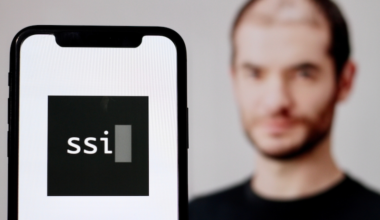Zoom fatigue and screen burnout are becoming frequent side effects of doing business in the pandemic. The challenges of online communication can be further emphasized when you take culture, personality, and age into account.
In some cultures, for example, it is much more common for interaction to occur during a presentation, but in others people might hesitate to speak up or even add a comment in the chat.
For many international entrepreneurs trying to advance in the U.S., things are getting harder: their charisma doesn’t necessarily shine through the screen. According to the 7-38-55 rule, we draw only about seven percent of meaning from words. The rest comes vocally or visually — through gestures, body language, the voice, and facial expressions.
The spotlight is on you
Tara Robinson, founder of the management service TrackRacks and a native Bahamian, said that during video calls, things can get more stressful since the spotlight really feels like it’s on you. Tara overcomes the feeling of disconnection by “taking the temperature of the audience” through questions.
Fabia Barbieri, a Brazilian national and a general manager at BeApp, logs in twice when giving a presentation. On her phone, she can see herself and the audience, and on her computer she can have control over her slide deck. This has worked to help her engage more with her audience and see how they might be responding. She does admit, however, that there are days when the lines between formal presentations and casual calls blur.
“It’s sometimes easy to forget when you are sitting in your living room where you have been all day and you need to switch to presentation mode for a larger group,” Barbieri said.
For some tech entrepreneurs, Zoom has become the new normal. Anastasia Lykova, the program director for Starta Ventures, an accelerator for international startups in the U.S., noticed that Eastern European founders are at times more engaged on video than they were in person.
How to improve and succeed
Since it is not easy to understand how you are perceived, it is up to you to get to know your style. Recording ourselves while on video really helps us see how we are doing. However, you do need to ask the permission of the person you are speaking with.
A few key things to ask yourself are:
- Does my tone of voice match the message?
If you are delivering something serious, does it sound different from something more upbeat? If you tend to be a more monotone presenter or use a volume that tends to be too soft, it will be harder to keep the audience’s attention for very long. Speaking volume is personal and cultural—not everyone uses it the same way. Some Asian and European cultures speak using a much softer volume, in contrast with their American counterparts who are known to be more high-energy speakers. Keeping this in mind is key to understanding what your audience needs.
- Do I have vocal presence?
Much like your physical presence, your vocal presence will speak volumes for you. It might change the audience’s perception of you. You can say the same exact words in different ways, using different emphasis, pausing, pacing, and pitch variations. Your voice and your words need to work together to give you credibility. If you need to deliver a complex pitch or demo, mix your styles. Add some stories and examples along with numbers and data. Don’t use too much of one thing.
- Am I overtalking?
Overtalking can be caused by anxiety. If you are multilingual, you might be focusing on using the right vocabulary or organizing your thoughts. Also, you might come from a language background that has a lot more vocabulary than the language you are using for business. In English, you can be brief yet still effective, although this can feel like you are not providing enough information to establish your credibility. If overtalking is something you need to work on, set a timer and practice your responses. A minute is much faster than you think. See if you can give an answer that hits the key points. Another thing to do is to jot down bullets before the meeting and to try to hit those points without over-elaborating.
The world will become more and more connected as we move forward. International founders have even more options than ever to share their ideas, technology, and innovation with the world. Engage your clients and investors with your voice and style so they will sit up, listen, and remember!
Lisa Patti is a communication specialist and the founder of AccentC3








